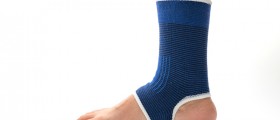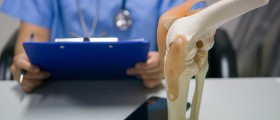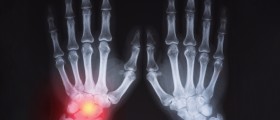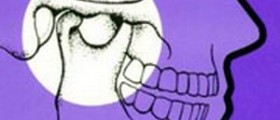
In the following text, we willtry to educate you on the elements of a finger fusion surgery. The type ofoperation and recovery are some of these elements. But we will focus on theoperation and causes in general. In the beginning we have to say what thefinger fusion operation actually is. It helps the people with finger jointarthritis, by eliminating the movements of the finger joints which producepain.
Let's try to explain what afinger joint is. It has the function similar to hinges. It acts as a hinge forfingers. We have a metacarpal bone located on the palm of the hand, which isconnected to the finger bone, named phalange. Every finger on our hand hasthree phalanges connected with interphalangeal joints. The joint located at thetip of the finger is called distal IP joint, while the one located on the oppositeside is called proximal IP joint. And naturally, many ligaments are present inthe hand for connecting the hand bones. Usually joints have smooth tractionbetween them because of the particular cartilage, which is the joint's clammylayer of surface. Problems occur when this layer begins to disappear.
The surgery used to treat thecondition makes the strong connection between the two joints affected. Thiseliminates the movement between them and thus the pain as well. Preparation forthe surgery consists of consulting with the doctor and restraining yourselffrom eating and drinking one day before the surgery. Then you arrive at thehospital and the operation can begin. The operation needs to be done underanesthesia, either local or general. Doctor will make the incision on theaffected finger, and then the joint capsule is opened in order to extract the particularcartilage. This leaves two places on the two joints cartilages free, only boneis present, and then the merger can be done. These two bones are connectedtogether with a metal pin. Of course, some processing of the bone is needed inorder for two parts to fit together. When all of this is done, tissue isattached and the incision is closed.
Just like many other surgeries,this one can also cause side effects. These problems are connected withanesthesia, which can produce lung problems, nerve damage during operation,infection, or nonunion, which is actually unsuccessful connection of the jointswhich produces pain. But problems for this operation, lasting approximately for90 minutes, are very rare. Cast has to be worn after the surgery, and also itis necessary to visit a doctor for checkups and eventually for the removal ofstitches, which usually happens after ten days. Cast will be removed after 180days. Several problems are possible after the cast is removed. Some patientshave to do therapy in order to work on the joint stiffness or to reduce theswelling. There are number of reasons for the physical therapy. Eventually youwill do exercises in order to get used to the new conditions, and how to usethem in the best possible way.

















Your thoughts on this
Loading...